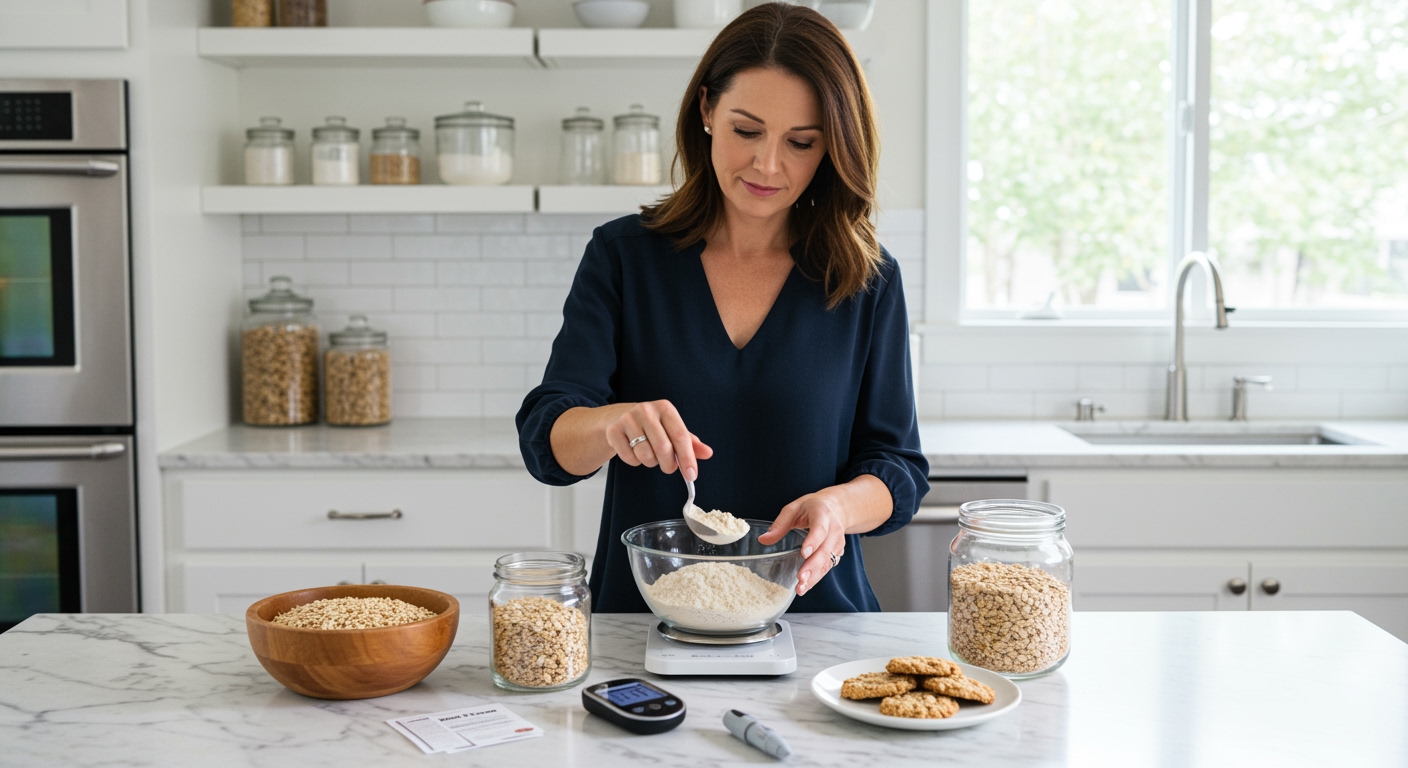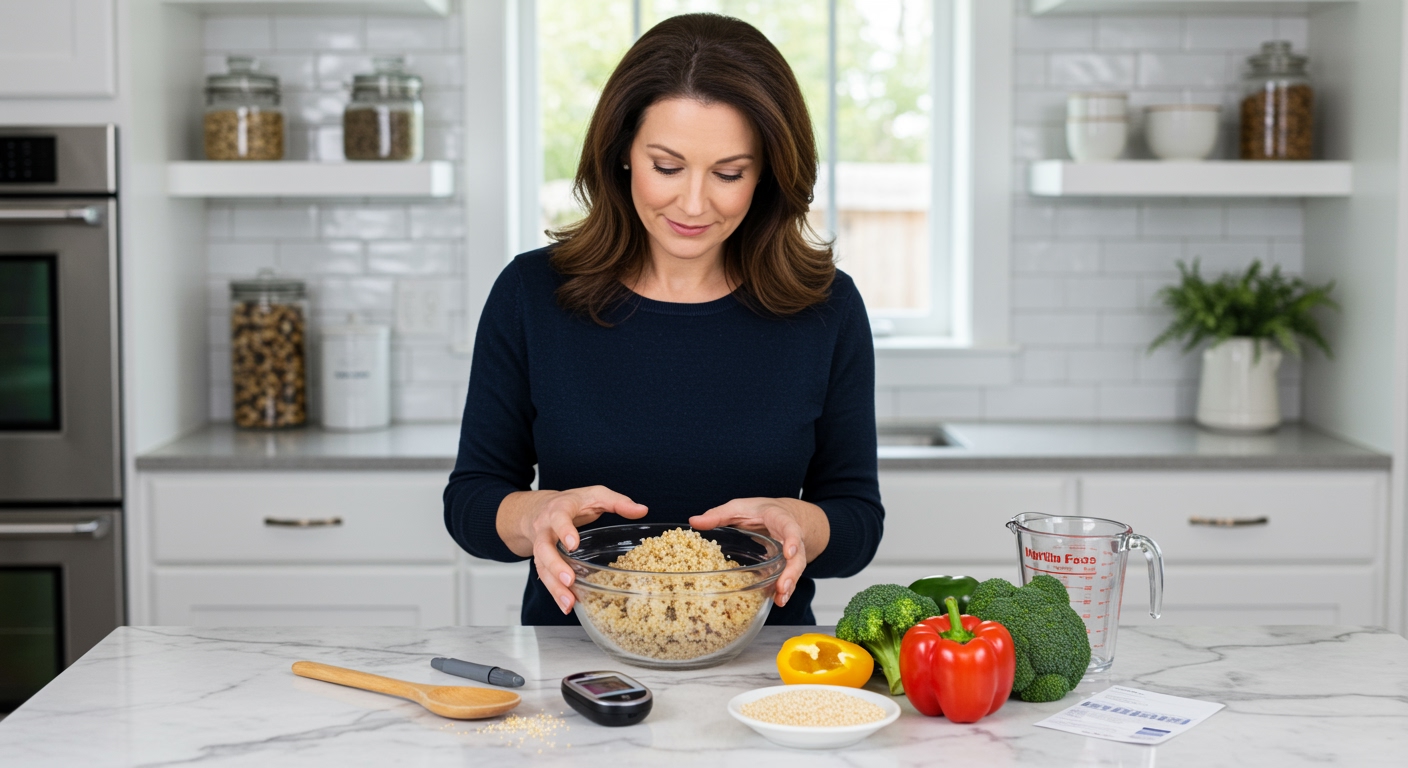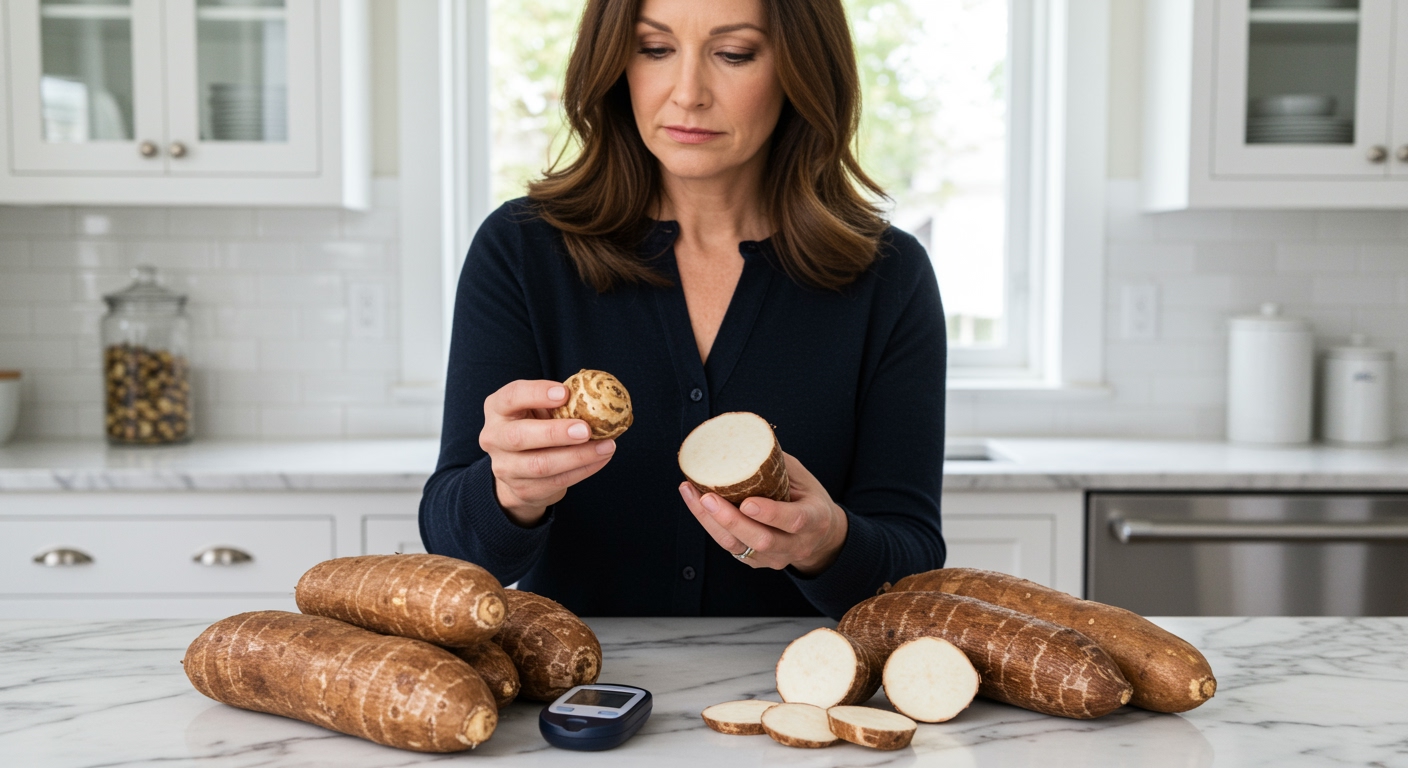✪ Key Takeaway: Oat flour can be good for diabetes when used in moderation due to its fiber content and lower glycemic impact than regular flour.
Introduction
You walk down the baking aisle and see oat flour sitting next to regular wheat flour, wondering if this trendy alternative could help manage your blood sugar better.
Many people with diabetes feel confused about which flours are safe to use because conflicting information makes it hard to know what actually works for blood sugar control.
Hi, I’m Abdur, your nutrition coach, and today I’m going to explain exactly how oat flour affects your blood sugar and whether it deserves a place in your diabetic-friendly kitchen.
What Makes Oat Flour Different From Regular Flour?
Oat flour comes from ground whole oats, which means it retains more of the original grain’s nutritional value compared to refined wheat flour.
The most important difference lies in the fiber content – oat flour contains about 7 grams of fiber per half cup, while all-purpose flour has only 1.5 grams.
This higher fiber content comes primarily from beta-glucan, a special type of soluble fiber that forms a gel-like substance in your digestive system.
When beta-glucan reaches your small intestine, it slows down the absorption of glucose into your bloodstream, preventing those sharp blood sugar spikes that regular flour often causes.
Regular wheat flour gets processed quickly by your digestive enzymes, causing glucose to enter your blood rapidly and trigger insulin responses.
Oat flour also provides more protein and healthy fats than refined flour, which further helps stabilize your blood sugar levels after meals.
✪ Fact: Oat flour has a glycemic index of around 44, compared to white flour’s glycemic index of 85.
How Does Oat Flour Impact Blood Sugar Levels?
When you eat foods made with oat flour, your blood sugar rises more gradually compared to foods made with regular flour.
The beta-glucan fiber creates a protective barrier in your intestines that slows down carbohydrate digestion and glucose absorption.
This slower absorption means your pancreas doesn’t need to release as much insulin at once, reducing the stress on your blood sugar control system.
Research shows that people who eat oat-based foods experience smaller blood sugar spikes and maintain more stable glucose levels for hours after eating.
The soluble fiber also helps improve your body’s insulin sensitivity over time, making your cells more responsive to insulin signals.
However, oat flour still contains carbohydrates – about 22 grams per quarter cup – so portion control remains important for blood sugar management.
The key difference is that these carbohydrates get processed more slowly and cause less dramatic changes in your glucose levels.
✪ Pro Tip: Combine oat flour with protein or healthy fats to further slow down blood sugar absorption.
What Are The Benefits Of Using Oat Flour For Diabetes?
The most significant benefit comes from oat flour’s ability to help you maintain steady blood sugar levels throughout the day.
Unlike refined flours that cause energy crashes, oat flour provides sustained energy that keeps you feeling satisfied longer.
The high fiber content also supports your digestive health by feeding beneficial gut bacteria, which play a role in glucose metabolism and insulin sensitivity.
Regular consumption of oat flour can help lower your HbA1c levels over time, which is a key marker of long-term blood sugar control.
The beta-glucan fiber has been shown to reduce cholesterol levels, addressing another common concern for people with diabetes.
Oat flour also contains important minerals like magnesium and chromium that support healthy glucose metabolism in your body.
You can use oat flour in many recipes as a direct substitute for regular flour, making it easier to stick to your diabetic meal plan without feeling deprived.
✪ Note: Studies show that 3 grams of oat beta-glucan daily can significantly improve blood sugar control.
Are There Any Risks Or Concerns With Oat Flour?
While oat flour offers many benefits, you need to be aware of portion sizes because it still contains carbohydrates that affect blood sugar.
Some people experience digestive discomfort when they suddenly increase their fiber intake, so start with small amounts and gradually increase over time.
If you have celiac disease or severe gluten sensitivity, make sure to choose certified gluten-free oat flour, as regular oats can be contaminated with wheat during processing.
Oat flour has a different texture than wheat flour, so your baked goods might turn out denser or more crumbly than expected.
The higher fiber content means you might need to adjust liquid ratios in recipes to achieve the right consistency.
Always monitor your blood sugar when trying new foods, including oat flour products, to see how your body responds individually.
Remember that even healthy alternatives like oat flour should fit within your overall carbohydrate budget for each meal.
✪ Pro Tip: Start with replacing just 25% of regular flour with oat flour in recipes to test your tolerance.
How Should You Use Oat Flour In Your Diabetic Diet?
The best approach is to use oat flour as a partial replacement for regular flour rather than a complete substitution in most recipes.
Start by replacing about one-third of the wheat flour in your favorite recipes with oat flour to maintain good texture while gaining blood sugar benefits.
Focus on using oat flour in recipes that pair well with other diabetes-friendly ingredients like nuts, seeds, and protein sources.
Pancakes, muffins, and bread recipes work particularly well with oat flour because the dense texture actually improves these baked goods.
You can also use oat flour as a thickening agent for soups and sauces, providing fiber benefits without significantly impacting blood sugar.
Always measure your portions carefully – a quarter cup of oat flour contains about the same carbohydrates as one slice of bread.
Consider timing your oat flour consumption earlier in the day when your body is more insulin sensitive and better able to handle carbohydrates.
✪ Fact: You can make your own oat flour by grinding old-fashioned oats in a food processor for 30 seconds.
The Bottom Line
Oat flour can be a valuable addition to your diabetic diet when used thoughtfully and in appropriate portions.
The best nutrition choices are the ones you can stick with long-term while keeping your blood sugar stable – and oat flour offers a practical way to enjoy baked goods without completely derailing your glucose control.
I would love to hear about your experiences with oat flour or any questions you might have about incorporating it into your meal planning – please share your thoughts in the comments below.
References
At NutritionCrown, we use quality and credible sources to ensure our content is accurate and trustworthy. Below are the sources referenced in creating this article:

Abdur Rahman Choudhury is a nutrition coach with over 7 years of experience in the field of nutrition.
Academic Qualifications
- Master of Science (M.Sc.) in Biochemistry: The University of Burdwan, India
- Bachelor of Science (B.Sc.) in Biochemistry: The University of Burdwan, India
Research Experience
- Genetic variations in the CYP11A gene among PCOS and Metabolic Syndrome patients: The Mission Hospital, India
Professional Certifications & Courses
- Stanford Introduction to Food and Health: Stanford University (US) - Coursera
- Certificate in Nutrition: Fabulous Body Inc. (US)
- Lose Weight and Keep It Off: Harvard Medical School (US)
- Nutrition and Disease Prevention: Taipei Medical University (Taiwan) - FutureLearn
Clinical Experience
- 7+ years as a nutrition coach
- Direct experience working with hundreds of patients to improve their health
Abdur currently lives in India and keeps fit by weight training and eating mainly home-cooked meals.




